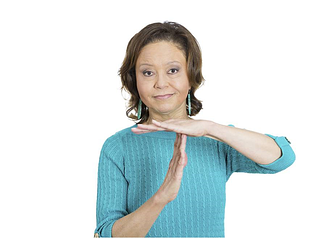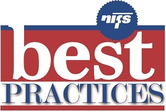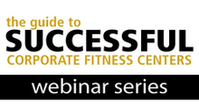 It’s busy at your community; sometimes it’s so busy that residents complain they have a hard time choosing what program to attend. Inevitably, the calendar is so full they have to miss events they love in order to attend something else. And your activities director is at the heart of that bustling calendar.
It’s busy at your community; sometimes it’s so busy that residents complain they have a hard time choosing what program to attend. Inevitably, the calendar is so full they have to miss events they love in order to attend something else. And your activities director is at the heart of that bustling calendar.
She’s responding to her monthly resident committee, and she’s fielding one-off requests from residents who stop by her office or who catch her in the hall. She’s also responding to phone calls from community groups or individuals who are interested in performing for or working with the residents.
Oh, and don’t forget the opportunities offered by other areas of the community. The therapy group has a monthly educational presentation they want to do. The fitness manager runs a host of exercise classes each week and wants to draw residents into his quarterly competitions. The dietician and chef want to host a bi-monthly cooking demonstration, and the social worker wants to bring in experts from the community as resources for the residents.
Your activities director performs a delicate balancing act every month taking “orders” (requests) from residents and the community; all while, she’s balancing existing and long-standing calendar events. (Do not mess with the card player’s schedule!) The programming is delicately placed on the calendar and carefully scheduled with typically limited space inside the community and tightly booked transportation to areas outside of the community.
If this sounds like your community, then you can agree that it is indeed busy.
And yet, busy doesn’t build purpose.
Residents in your community aren’t looking solely to be entertained. They’re looking for purposeful living in a setting where some of the barriers that used to get in the way, like home maintenance, have been removed. They’re looking for opportunities to contribute, and to grow, and to connect in new and challenging ways.
What if your activities director stopped being an order taker? What if she stopped using the meeting minutes from her monthly committee minute as a to do list and started thinking strategically about how to engage a variety of stakeholders in the planning process for resident events and activities?
You see, right now, the activities director is functioning much like the wait staff in your dining venues. She’s greeting a table (resident committee), introducing herself (new residents), and asking residents what they want to do. She’s taking their orders, and fulfilling the requests (as best she can). And in fact, there’s nothing wrong with that model. It’s what happens in most communities on a regular basis. In most cases, residents are quite happy with their program/event options.
So, if the residents are happy, why on earth would I be talking about a different way of building lifestyle at the community?
Because there’s more richness out there for your residents; there is more that can be done to build purposeful living. And there are residents who don’t participate because you haven’t tapped their interest or desires yet. (Oh, there is also marketing goodness on the table with a changed approach.)
If your activities director moved away from taking orders, could she build more intentional opportunities for residents to engage in the community lifestyle programming? Would more of your residents be involved in the offerings because of the thoughtful approach to a variety of interests represented by your diverse audience?
To be clear, I’m not advocating you turn programming on its head. (We do not need your residents in an uproar over substantial changes to beloved activities.) I am instead suggesting that your activities director take a fresh approach to how the calendar is organized, who is supporting events, how events are developed, and how success is measured.
Sometimes it’s hard to know where to start when you’re trying to change an approach or a process. Our Build Vitality webinar series (which covers branding, staff, program, and fitness center design) is a good resource. I linked a few of our blogs above for more information as well. If you’re still not sure where to go to get started, or you’d like a more hands on approach, consider bringing us onsite for consulting to help you chart a course to build a multidimensional activities calendar that cultivates purpose for your residents.







 We see
We see 
 We all know that fruits and vegetables are good for us, right? We hear it all the time that fruits and vegetables lower the chance of certain cancers, eating your spinach will prevent cataracts, eating fruits leads to longer life and beet juice lowers blood pressure. We also know that fruits and vegetables add color and texture to our dinner plate, they are low in calories and provide fiber, vitamins and minerals for our body. So, if something is good for us, why don’t we embrace it and take it all in? Well, it is not as easy as it sounds. For many, it may be the taste factor and immediate satisfaction of good tasting food, overrides thoughts of long-term health. Were you forced to eat your vegetables when you were younger? Possibly the half eaten peas and carrots that were in your mouth became the new center piece at the dinner table? Bad experiences tend to keep us away from trying it again. So, what are the top 3 reasons to increase fruit and veggie intake? Why would I want to give these foods another try?
We all know that fruits and vegetables are good for us, right? We hear it all the time that fruits and vegetables lower the chance of certain cancers, eating your spinach will prevent cataracts, eating fruits leads to longer life and beet juice lowers blood pressure. We also know that fruits and vegetables add color and texture to our dinner plate, they are low in calories and provide fiber, vitamins and minerals for our body. So, if something is good for us, why don’t we embrace it and take it all in? Well, it is not as easy as it sounds. For many, it may be the taste factor and immediate satisfaction of good tasting food, overrides thoughts of long-term health. Were you forced to eat your vegetables when you were younger? Possibly the half eaten peas and carrots that were in your mouth became the new center piece at the dinner table? Bad experiences tend to keep us away from trying it again. So, what are the top 3 reasons to increase fruit and veggie intake? Why would I want to give these foods another try?
 In
In  It’s about that time of year where the weather is getting warmer and the flowers are blooming. May is a wonderful introduction into the summer months and is also a time we celebrate women. Mother’s Day is not the only day to celebrate women, but there is a whole week dedicated to women’s health. For this year, National Women’s Health Week for the US is May 11 – 17. Women can celebrate the generations of women before them that have pioneered the way and take charge of their health to make it a priority. This week focuses on preventive measures to take to improve their health and avoid disease.
It’s about that time of year where the weather is getting warmer and the flowers are blooming. May is a wonderful introduction into the summer months and is also a time we celebrate women. Mother’s Day is not the only day to celebrate women, but there is a whole week dedicated to women’s health. For this year, National Women’s Health Week for the US is May 11 – 17. Women can celebrate the generations of women before them that have pioneered the way and take charge of their health to make it a priority. This week focuses on preventive measures to take to improve their health and avoid disease. Many communities have regularly scheduled recreational activities on the monthly calendar such as croquet, bocce ball, or Wii that seem like fairly logical programs to spin into Olympics-themed events in senior living communities. Still, it’s not enough to simply group these regularly occurring events together and call them your Community Olympics. How do you set up the initiative so that it has broad appeal and allows those residents who participate in the events regularly to feel inspired and challenged alongside their novice neighbors? This two-part blog will provide creative tips to kick your Olympics up a notch with your resident favorites as well as provide fresh new ideas for events.
Many communities have regularly scheduled recreational activities on the monthly calendar such as croquet, bocce ball, or Wii that seem like fairly logical programs to spin into Olympics-themed events in senior living communities. Still, it’s not enough to simply group these regularly occurring events together and call them your Community Olympics. How do you set up the initiative so that it has broad appeal and allows those residents who participate in the events regularly to feel inspired and challenged alongside their novice neighbors? This two-part blog will provide creative tips to kick your Olympics up a notch with your resident favorites as well as provide fresh new ideas for events. Raise your hand if you love hearing stories about how your staff make a resident’s day, particularly when it occurs organically, if you will, by the employee simply being who she is. I know…me too. That’s why I couldn’t resist sharing these two stories in our blog and how we engage residents in senior living fitness programs.
Raise your hand if you love hearing stories about how your staff make a resident’s day, particularly when it occurs organically, if you will, by the employee simply being who she is. I know…me too. That’s why I couldn’t resist sharing these two stories in our blog and how we engage residents in senior living fitness programs. 
 Often when we think or talk about having good health, it consists of eating healthy foods and exercising. There are many areas of our lives that we could improve upon health wise—often it seems like there is so much to work on to keep track. However, one segment of health that seems to go by the way side is mental health. Just as muscles lose strength or cardiovascular fitness declines with age, your brain can lose agility and decline in the way that it functions. There is no one way to prevent degenerative diseases of the brain such as Alzheimer’s, but you can start today with the way you live your life to help make your brain healthier. Here are a few tips for great
Often when we think or talk about having good health, it consists of eating healthy foods and exercising. There are many areas of our lives that we could improve upon health wise—often it seems like there is so much to work on to keep track. However, one segment of health that seems to go by the way side is mental health. Just as muscles lose strength or cardiovascular fitness declines with age, your brain can lose agility and decline in the way that it functions. There is no one way to prevent degenerative diseases of the brain such as Alzheimer’s, but you can start today with the way you live your life to help make your brain healthier. Here are a few tips for great 
